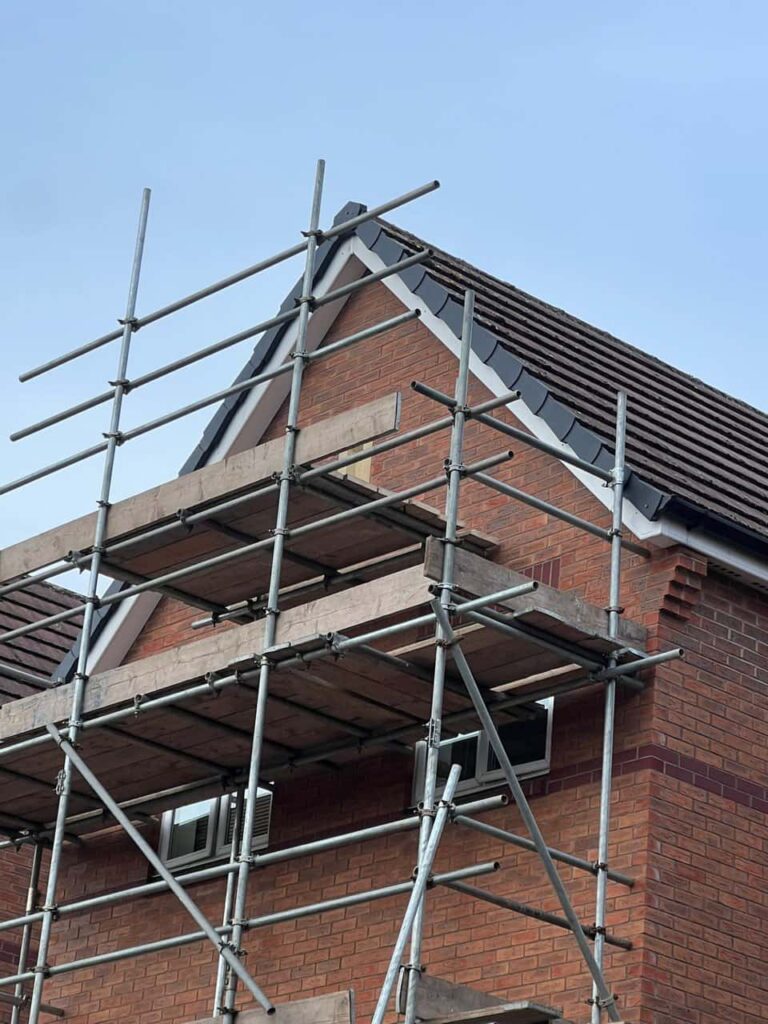After a storm, your roof is one of the most vulnerable parts of your home. High winds, heavy rain, and flying debris can cause significant damage, leaving your home exposed to further weather-related issues. At Cambourne Roofing Repairs, based in Cambourne, Cambridgeshire, we understand how crucial it is to act quickly after a storm to prevent further damage. In this blog post, we’ve compiled an essential checklist for homeowners to follow when addressing emergency roof repairs after a storm.
1. Ensure Your Safety First
Before inspecting your roof for damage, the most important step is to ensure the safety of you and your family. Storms can leave hazards such as fallen power lines, broken glass, or loose debris around your home. It’s essential to assess the immediate surroundings carefully before approaching any damaged areas.
- Avoid standing water: Flooded areas or water near electrical outlets pose a serious safety risk.
- Stay on the ground: Do not attempt to climb onto the roof to inspect the damage, as the roof may be unstable or slippery.
2. Perform a Visual Roof Inspection from Ground Level
Once it is safe to do so, conduct a visual inspection of your roof from the ground. This initial check will help you assess the extent of the damage and determine whether emergency repairs are necessary.
- Check for missing or loose tiles: High winds can dislodge tiles, leaving your roof exposed to the elements.
- Look for debris on the roof: Branches, leaves, or other storm debris can cause further damage if not removed promptly.
- Inspect the gutters: Ensure that gutters are intact and not overflowing with debris, as blocked gutters can cause water damage to the roof and walls.
3. Check for Signs of Leaks Inside the Home
After a storm, it’s important to check inside your home for any signs of water infiltration. Leaks may not always be immediately visible, so it’s important to inspect ceilings, walls, and attics carefully.
- Look for water stains: Dark spots or discolouration on ceilings and walls are often the first signs of a roof leak.
- Check the attic: Look for damp insulation, water droplets, or signs of mould, as these could indicate a leak from the roof.
4. Document the Damage
If you notice significant damage to your roof or property, it’s important to document everything before any repairs begin. This will be useful if you need to make an insurance claim.
- Take clear photos of the damage: Capture images of missing tiles, structural damage, and any interior water damage caused by the storm.
- Keep a record of damaged belongings: If personal property inside your home has been damaged by roof leaks, make sure to document this as well.
5. Call a Professional Roofing Contractor
Once you have assessed the damage, the next step is to contact a professional roofing contractor to carry out the necessary emergency repairs. At Cambourne Roofing Repairs, we specialise in handling storm-damaged roofs and can provide prompt assistance to safeguard your home.
- Request an inspection: A professional roofer will conduct a thorough inspection of your roof, both from the ground and at roof level, to determine the full extent of the damage.
- Get a repair plan: Depending on the severity of the damage, your roofer will create a plan for immediate repairs to prevent further water ingress or structural problems.
6. Temporary Solutions to Prevent Further Damage
While waiting for professional repairs, it may be necessary to implement temporary solutions to prevent further damage to your home. Some common temporary fixes include:
- Tarping the roof: A professional roofer can apply a tarp to cover any exposed sections of your roof, protecting your home from rain and debris until permanent repairs are made.
- Patching leaks: If water is entering your home through small leaks, a professional can apply temporary patches to reduce the amount of water coming in.
7. File an Insurance Claim
If your roof has been significantly damaged, it’s important to contact your insurance provider as soon as possible to begin the claims process. Having documented the damage thoroughly, you can submit your evidence to the insurance company for review.
- Contact your insurer immediately: Report the damage and follow your insurer’s instructions for filing a claim.
- Work with your contractor: Your roofing contractor can provide detailed estimates and documentation to support your insurance claim.
Conclusion
Storms can cause sudden and significant damage to your roof, but with a clear action plan, you can minimise further issues and protect your home. Following this essential checklist ensures that you address the damage safely and efficiently, with the help of professional roofing contractors like Cambourne Roofing Repairs. If your roof has been affected by a storm in Cambourne, Cambridgeshire, contact us today for expert assistance and reliable emergency roof repairs. Our team is here to help restore your roof and keep your home safe from the elements.
Call us on: 01954 776 277
Click here to find out more about Cambourne Roofing Repairs
Click here to complete our contact form and see how we can help with your roof.

